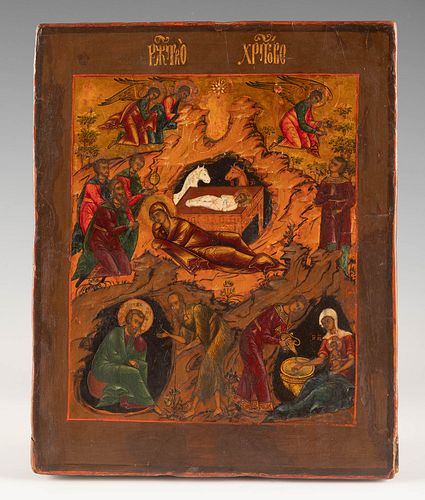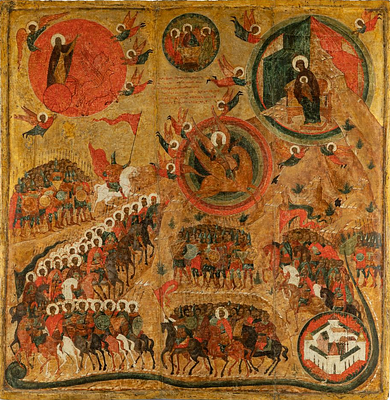Russian school, 18th century. Birth of Christ. Tempera on panel.
Lot 43
About Seller
Setdart Auction House
Carrer Aragó 346
Barcelona
Spain
Setdart Subastas was born in 2004 and is currently the first online art auction in Spain with solidity, prestige and reliability guaranteed by our more than 60,000 users. Setdart has a young, dynamic and enterprising team ready to successfully manage the purchase and sale of art works through custom...Read more
Estimate:
EUR€1,800 - EUR€2,000
$1,875 - $2,083.33
Absentee vs Live bid
Two ways to bid:
- Leave a max absentee bid and the platform will bid on your behalf up to your maximum bid during the live auction.
- Bid live during the auction and your bids will be submitted real-time to the auctioneer.
Bid Increments
| Price | Bid Increment |
|---|---|
| EUR€0 | EUR€10 |
| EUR€200 | EUR€25 |
| EUR€500 | EUR€50 |
| EUR€1,000 | EUR€100 |
| EUR€3,000 | EUR€200 |
| EUR€5,000 | EUR€500 |
| EUR€10,000 | EUR€1,000 |
| EUR€20,000 | EUR€2,000 |
| EUR€50,000 | EUR€5,000 |
About Auction
By Setdart Auction House
Sep 23, 2021
Set Reminder
2021-09-23 10:00:00
2021-09-23 10:00:00
America/New_York
Bidsquare
Bidsquare : RUSSIAN ICONS
https://www.bidsquare.com/auctions/setdart-auction-house/russian-icons-7431
Setdart Auction House sofia@setdart.com
Setdart Auction House sofia@setdart.com
- Lot Description
Russian school, 18th century. Birth of Christ. Tempera on panel. Measurements: 26 x 20 cm. The iconography of the Nativity came to Russia from Byzantium. The earliest known representations include a painting in the Church of the Saviour in Nereditsa destroyed by the Nazis (1198) and a painting in the Mirozha Monastery in Pskov (1156). The iconography of the feast of the Nativity of Christ belongs to the multi-scenic type: a single icon depicts several scenes dedicated to the same event. The central figures of the icon are the Mother of God and the Christ Child lying in a cave, the place where, according to the Gospel, the Lord was born. The Divine Infant Jesus is depicted lying in the manger. He is surrounded by the animals, a donkey and an ox, which, according to legend, were present at the birth of Christ and warmed the newborn Child with their breath. The leaning Magi, who at the call of the star of Bethlehem came to worship the Messiah and to offer him their gifts - gold, frankincense and Smyrna, are also shown seated before the Lord. In the case of the icon of interest, the Magi are on the left side of the icon, next to the reclining Virgin, and are looking at the Star of Bethlehem. In the upper right-hand corner of the icon are traditionally painted images of angels praising the birth of Christ. In the lower right corner of the icon is the washing of the Christ Child after the birth. In the lower left corner, according to tradition, two figures are depicted at the same time: one, the larger, St. Joseph, and the other, smaller, the figure of St. Isaiah the Prophet, who in Old Testament times foretold the birth of Christ. In general, the entire Nativity icon is painted in bright colours, reflecting the joy and triumph of the entire visible and invisible world at the birth of the Saviour. The greenish tone in which the frame of this icon is painted chronologically places it around the middle of the 18th century, when this type of polychromy for the backgrounds of icons or for large fields of colour began to become popular in Russia.
- Shipping Info
-
In-house shipping available. Please inquire at admin@setdart.com.
-
- Buyer's Premium



 EUR
EUR CAD
CAD AUD
AUD GBP
GBP MXN
MXN HKD
HKD CNY
CNY MYR
MYR SEK
SEK SGD
SGD CHF
CHF THB
THB















